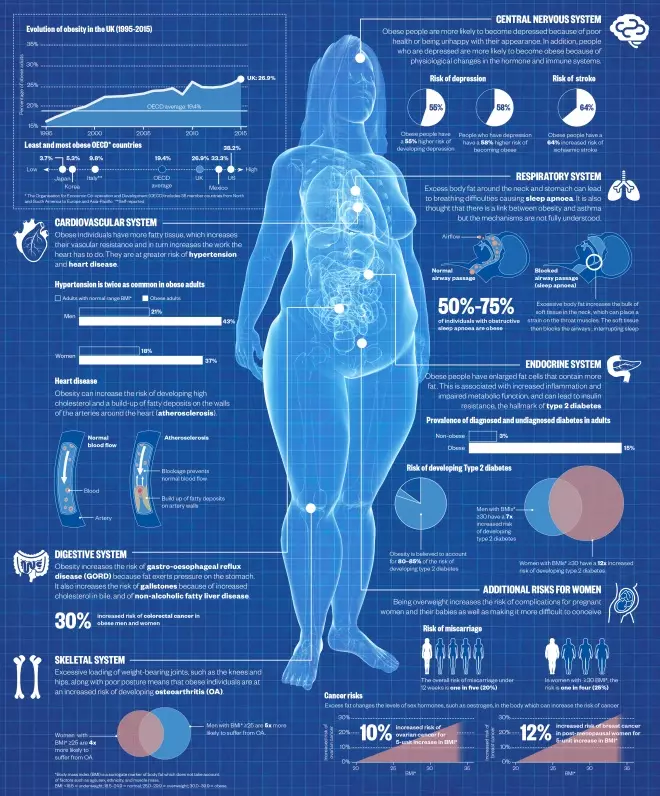
To view the full infographic, click here
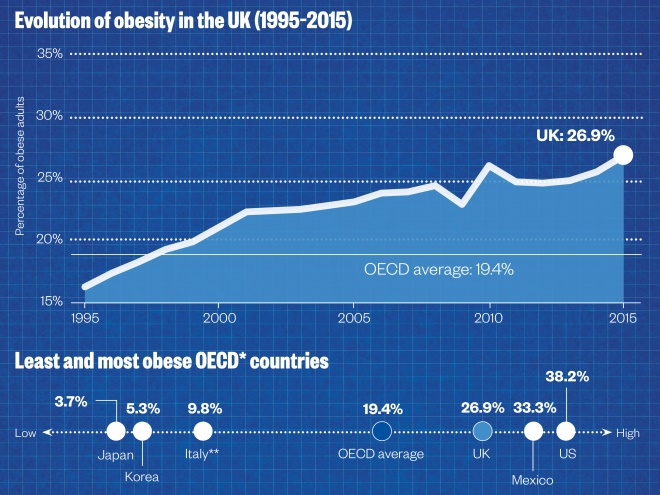
Obesity in the UK and OECD nations
Source: Organisation for Economic Co-operation and Development (OECD)
* The Organisation for Economic Co-operation and Development (OECD) includes 35 member countries from North and South America to Europe and Asia-Pacific
** Self-reported
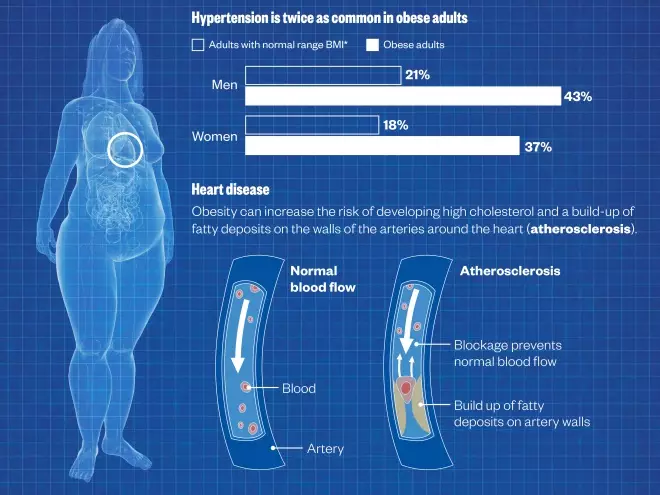
Cardiovascular system
Source: Obesity Action, NHS Digital
Obese individuals have more fatty tissue, which increases their vascular resistance and in turn increases the work the heart has to do. They are at greater risk of hypertension and heart disease.
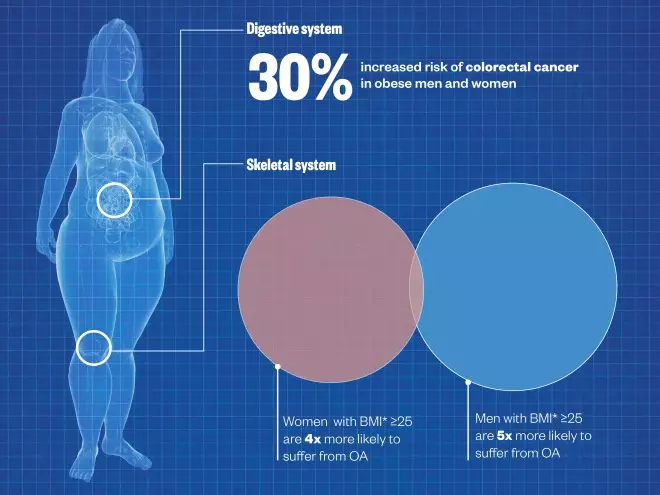
Digestive and skeletal systems
Source: Digestive system: Obesity Action, National Institute of Diabetes and Digestive and Kidney Diseases, National Cancer Institute; Skeletal system: Johns Hopkins Arthritis Center
Obesity increases the risk of gastro-oesophageal reflux disease (GORD) because fat exerts pressure on the stomach. It also increases the risk of gallstones because of increased cholesterol in bile, and of non-alcoholic fatty liver disease.
Excessive loading of weight-bearing joints, such as the knees and hips, along with poor posture means that obese individuals are at an increased risk of developing osteoarthritis (OA).
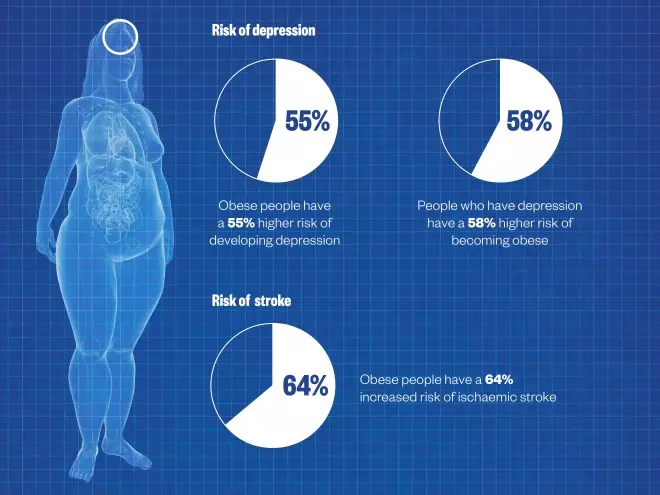
Central nervous system
Source: Science Daily, Arch Gen Psychiatry 2010;67:227, Stroke 2010;41:e421
Obese people are more likely to become depressed because of poor health or being unhappy with their appearance. In addition, people who are depressed are more likely to become obese because of physiological changes in the hormone and immune systems.
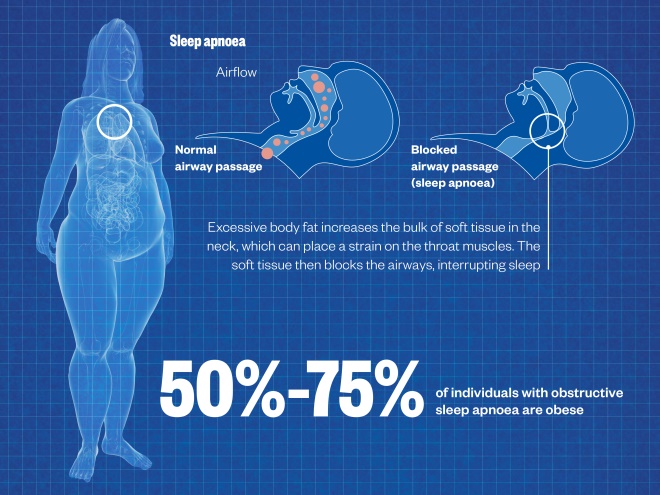
Respiratory system
Source: NHS Choices, Thorax 2008;63:651
Excess body fat around the neck and stomach can lead to breathing difficulties causing sleep apnoea. It is also thought that there is a link between obesity and asthma but the mechanisms are not fully understood.
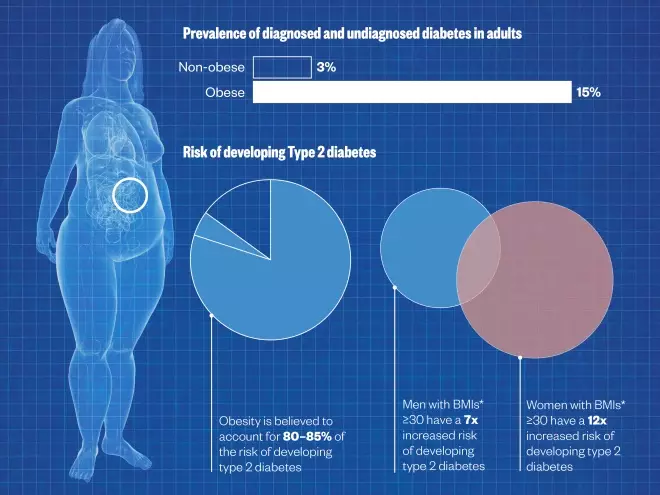
Endocrine system
Source: Diabetes.co.uk, NHS Digital (2017), BMC Public Health 2009;9:16
Obese people have enlarged fat cells that contain more fat. This is associated with increased inflammation and impaired metabolic function, and can lead to insulin resistance, the hallmark of type 2 diabetes.
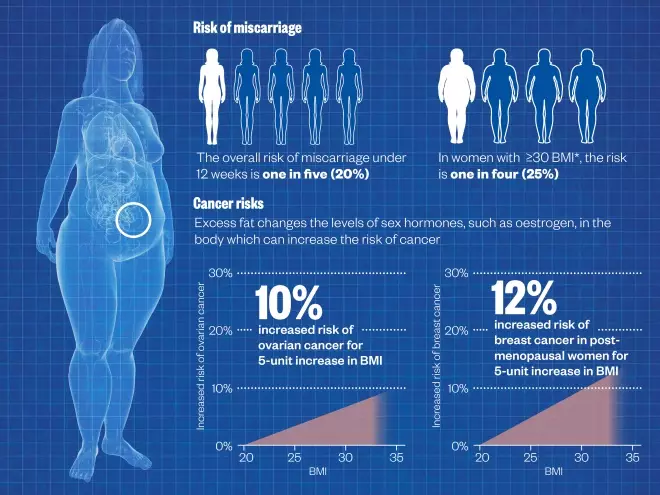
Additional risks for women
Source: National Cancer Institute, NHS Choices
Being overweight increases the risk of complications for pregnant women and their babies as well as making it more difficult to conceive.
*Body mass index (BMI) is a surrogate marker of body fat which does not take account of factors such as age, sex, ethnicity, and muscle mass.
BMI: <18.5 = underweight; 18.5–24.9 = normal; 25.0–29.9 = overweight; 30.0–39.9 = obese.
References
Other sources: Asthma UK, BBC Science, National Obesity Forum, British Heart Foundation
Editorial adviser: Terence Maguire, community pharmacist in Northern Ireland
Infographic: MAG


